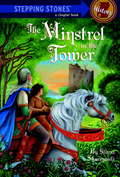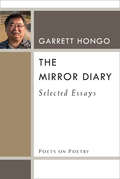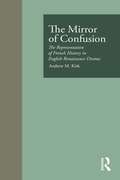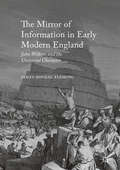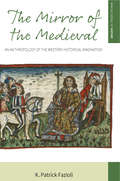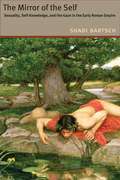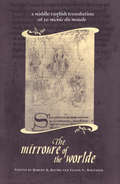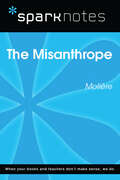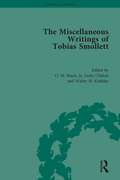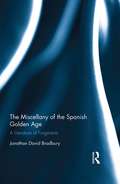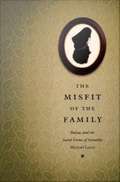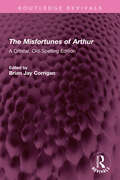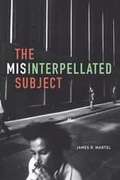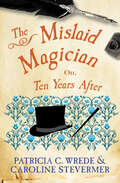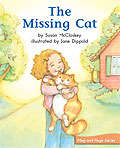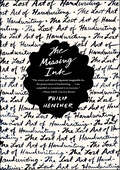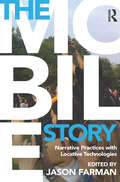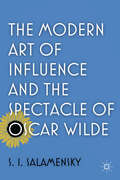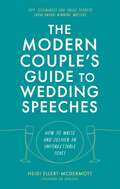- Table View
- List View
The Minstrel in the Tower
by Gloria SkurzynskiIn this gripping medieval page-turner, Roger and his sister Alice are kidnapped and held for ransom in an ancient tower. To escape and find their uncle, the children must summon all their courage and imagination. "Designed as easy-reading material for middle-graders, this has the virtues of an attractive format and illustrations, a fast plot, and even a feminist fillip: Alice is the more intrepid of the siblings, Roger's gifts are for music and ventriloquism. "--Bulletin, Center for Children's Books. From the Trade Paperback edition.
The Minstrel in the Tower
by Gloria SkurzynskiAn adventurous rescue set in the time of medieval knights, castles, bandits, and music. Before their father returns to France from the Crusades, daring Alice and musical Roger set off on their own journey: to find their long-lost uncle. But on the way, the siblings are kidnapped and locked in an ancient hidden tower. To finish their quest, they need to escape--and fast! Can Alice use her courage to slip away and find help? And can Roger use his musical talents to guide her back before it's too late? History Stepping Stones now feature updated content that emphasizes Common Core and today's renewed interest in nonfiction. Perfect for home, school, and library bookshelves!
The Miracle of Language
by LedererMaster verbalist Richard Lederer, America's "Wizard of Idiom" (Denver Post), presents a love letter to the most glorious of human achievements... Welcome to Richard Lederer's beguiling celebration of language -- of our ability to utter, write, and receive words. No purists need stop here. Mr. Lederer is no linguistic sheriff organizing posses to hunt down and string up language offenders. Instead, join him "In Praise of English," and discover why the tongue described in Shakespeare's day as "of small reatch" has become the most widely spoken language in history: English never rejects a word because of race, creed, or national origin. Did you know that jukebox comes from Gullah and canoe from Haitian Creole? Many of our greatest writers have invented words and bequeathed new expressions to our eveyday conversations. Can you imagine making up almost ten percent of our written vocabulary? Scholars now know that William Shakespeare did just that! He also points out the pitfalls and pratfalls of English. If a man mans a station, what does a woman do? In the "The Department of Redundancy Department," "Is English Prejudiced?" and other essays, Richard Lederer urges us not to abandon that which makes us human: the capacity to distinguish, discriminate, compare, and evaluate.
The Mirage of America in Contemporary Italian Literature and Film
by Barbara AlfanoThe Mirage of America in Contemporary Italian Literature and Film explores the use of images associated with the United States in Italian novels and films released between the 1980s and the 2000s. In this study, Barbara Alfano looks at the ways in which the individuals portrayed in these works - and the intellectuals who created them - confront the cultural construct of the American myth. As Alfano demonstrates, this myth is an integral part of Italians' discourse to define themselves culturally - in essence, Italian intellectuals talk about America often for the purpose of talking about Italy.The book draws attention to the importance of Italian literature and film as explorations of an individual's ethics, and to how these productions allow for functioning across cultures. It thus differentiates itself from other studies on the subject that aim at establishing the relevance and influence of American culture on Italian twentieth-century artistic representations.
The Mirror Diary: Selected Essays
by Garrett HongoA volume in the Poets on Poetry series, which collects critical works by contemporary poets, gathering together the articles, interviews, and book reviews by which they have articulated the poetics of a new generation. The Mirror Diary tracks the emergence of an original poetic voice and a learned consciousness amid multiple and sometimes competing influences of complex literary traditions and regional and ethnic histories. Beginning with a literary inquiry into the history of Japanese Americans in Hawai`i and California, Garrett Hongo draws on his own history to consider the mosaic of American identities—personal, cultural, and poetic—in the context of a postmodern diaspora. Hongo’s essays attest to the breadth of what he considers his cultural inheritance and literary antecedents, ranging from the poets of China’s T’ang Dynasty to American poets such as Walt Whitman and Charles Olson. He explains free-verse prosody by way of John Coltrane’s jazz; praises his contemporaries, poets David Mura, Edward Hirsch, and Mark Jarman; and acknowledges his mentors, Bert Meyers and Charles Wright. In other pieces he engages with controversies and contestations in contemporary Asian American literature, confronts the politics of race and the legacy of Japanese American internment during World War II, offers paeans to the Hawaiian landscape, and addresses immigrants newly arrived in America with a warm welcome. The Mirror Diary is the work of a poet fully engaged with contemporary politics and poetics and committed to the study and celebration of diverse traditions.
The Mirror and the Lamp: Romantic Theory and the Critical Tradition
by M. H. AbramsThis highly acclaimed study analyzes the various trends in English criticism during the first four decades of this century.
The Mirror of Confusion: The Representation of French History in English Renaissance Drama (Garland Studies in the Renaissance #6)
by Andrew M. KirkFirst published in 1997. Routledge is an imprint of Taylor & Francis, an informa company.
The Mirror of Information in Early Modern England
by James Dougal FlemingThis book examines the seventeenth-century project for a "real" or "universal" character: a scientific and objective code. Focusing on the Essay towards a real character, and a philosophical language (1668) of the polymath John Wilkins, Fleming provides a detailed explanation of how a real character actually was supposed to work. He argues that the period movement should not be understood as a curious episode in the history of language, but as an illuminating avatar of information technology. A non-oral code, supposedly amounting to a script of things, the character was to support scientific discourse through a universal database, in alignment with cosmic truths. In all these ways, J. D. Fleming argues, the world of the character bears phenomenological comparison to the world of modern digital information--what has been called the infosphere.
The Mirror of the Medieval: An Anthropology of the Western Historical Imagination (Making Sense of History #29)
by K. Patrick FazioliSince its invention by Renaissance humanists, the myth of the "Middle Ages" has held a uniquely important place in the Western historical imagination. Whether envisioned as an era of lost simplicity or a barbaric nightmare, the medieval past has always served as a mirror for modernity. This book gives an eye-opening account of the ways various political and intellectual projects-from nationalism to the discipline of anthropology-have appropriated the Middle Ages for their own ends. Deploying an interdisciplinary toolkit, author K. Patrick Fazioli grounds his analysis in contemporary struggles over power and identity in the Eastern Alps, while also considering the broader implications for scholarly research and public memory.
The Mirror of the Self: Sexuality, Self-Knowledge, and the Gaze in the Early Roman Empire
by Shadi BartschPeople in the ancient world thought of vision as both an ethical tool and a tactile sense, akin to touch. Gazing upon someone—or oneself—was treated as a path to philosophical self-knowledge, but the question of tactility introduced an erotic element as well. In The Mirror of the Self, Shadi Bartsch asserts that these links among vision, sexuality, and self-knowledge are key to the classical understanding of the self. Weaving together literary theory, philosophy, and social history, Bartsch traces this complex notion of self from Plato’s Greece to Seneca’s Rome. She starts by showing how ancient authors envisioned the mirror as both a tool for ethical self-improvement and, paradoxically, a sign of erotic self-indulgence. Her reading of the Phaedrus, for example, demonstrates that the mirroring gaze in Plato, because of its sexual possibilities, could not be adopted by Roman philosophers and their students. Bartsch goes on to examine the Roman treatment of the ethical and sexual gaze, and she traces how self-knowledge, the philosopher’s body, and the performance of virtue all played a role in shaping the Roman understanding of the nature of selfhood. Culminating in a profoundly original reading of Medea, The Mirror of the Self illustrates how Seneca, in his Stoic quest for self-knowledge, embodies the Roman view, marking a new point in human thought about self-perception. Bartsch leads readers on a journey that unveils divided selves, moral hypocrisy, and lustful Stoics—and offers fresh insights about seminal works. At once sexy and philosophical, The Mirror of the Self will be required reading for classicists, philosophers, and anthropologists alike.
The Mirroure of the Worlde
by Robert R. Raymo Elaine E. Whitaker Ruth E. SternglantzThe allegories of the virtues and vices were a common teaching tool in the Middle Ages for both religious and lay audiences to learn the basic tenets of the Christian faith. The Mirroure of the Worlde makes available for the first time the unique text in the fifteenth-century British manuscript, MS. Bodley 283, which is among the last and largest works in the tradition of lay religious instruction mandated by the Fourth Lateran Council. The Mirroure is derived from conflations of the Miroir du Monde and the Somme le Roi, both vernacular treatises on vices and virtues compiled in Northeast France in the thirteenth century. Translated into Middle English by, it is believed, Stephen Scrope, the foremost English translator of the mid-fifteenth century, this edition is one of the only books of virtues and vices that contains Latin text, an inclusion that points towards a more widespread knowledge of the language among the laypeople than previously thought. Complete with explanatory notes and a glossary, The Mirroure of the Worlde widens the understanding of medieval moral instruction, religion, reading practices, and education.
The Misanthrope (SparkNotes Literature Guide Series)
by SparkNotesThe Misanthrope (SparkNotes Literature Guide) by Moliere Making the reading experience fun! Created by Harvard students for students everywhere, SparkNotes is a new breed of study guide: smarter, better, faster. Geared to what today's students need to know, SparkNotes provides: *Chapter-by-chapter analysis *Explanations of key themes, motifs, and symbols *A review quiz and essay topicsLively and accessible, these guides are perfect for late-night studying and writing papers
The Miscellaneous Writings of Tobias Smollett (The Pickering Masters)
by O M Brack Leslie Chilton Walter H. KeithleyTobias Smollett (1721–71) is best known as a novelist; however this prolific and talented author was also a notable historian, literary critic, translator, medical writer and satirist. This volume will help us to reassess our understanding of Smollett by presenting some of his most significant miscellaneous writings in a new critical edition.
The Miscellany of the Spanish Golden Age: A Literature of Fragments
by Jonathan David BradburyTaking up the invitation extended by tentative attempts over the past three decades to construct a functioning definition of the genre, Jonathan Bradbury traces the development of the vernacular miscellany in sixteenth- and seventeenth-century Spain and Spanish-America. In the first full-length study of this commercially successful and intellectually significant genre, Bradbury underlines the service performed by the miscellanists as disseminators of knowledge and information to a popular readership. His comprehensive analysis of the miscelánea corrects long-standing misconceptions, starting from its poorly-understood terminology, and erects divisions between it and other related genres. His work illuminates the relationship between the Golden Age Spanish miscellany and those of the classical world and humanist milieu, and illustrates how the vernacular tradition moved away from these forebears. Bradbury examines in particular the later inclusion of explicitly fictional components, such as poetic compositions and short prose fiction, alongside the vulgarisation of erudite or inaccessible prose material, which was the primary function of the earlier Spanish miscellanies. He tackles the flexibility of the miscelánea as a genre by assessing the conceptual, thematic and formal aspects of such works, and exploring the interaction of these features. As a result, a genre model emerges, through which Golden Age works with fragmentary and non-continuous contents can better be interpreted and classified.
The Misfit of the Family: Balzac and the Social Forms of Sexuality
by Michael LuceyIn more than ninety novels and novellas, Honor de Balzac (1799-1850) created a universe teeming with over two thousand characters. The Misfit of the Family reveals how Balzac, in imagining the dense, vividly rendered social world of his novels, used his writing as a powerful means to understand and analyze--as well as represent--a range of forms of sexuality. Moving away from the many psychoanalytic approaches to the novelist's work, Michael Lucey contends that in order to grasp the full complexity with which sexuality was understood by Balzac, it is necessary to appreciate how he conceived of its relation to family, history, economics, law, and all the many structures within which sexualities take form. The Misfit of the Family is a compelling argument that Balzac must be taken seriously as a major inventor and purveyor of new tools for analyzing connections between the sexual and the social. Lucey's account of the novelist's deployment of "sexual misfits" to impel a wide range of his most canonical works--Cousin Pons, Cousin Bette, Eugenie Grandet, Lost Illusions, The Girl with the Golden Eyes--demonstrates how even the flexible umbrella term "queer" barely covers the enormous diversity of erotic and social behaviors of his characters. Lucey draws on the thinking of Michel Foucault and Pierre Bourdieu and engages the work of critics of nineteenth-century French fiction, including Naomi Schor, D. A. Miller, Franco Moretti, and others. His reflections on Proust as Balzac's most cannily attentive reader suggest how the lines of social and erotic force he locates in Balzac's work continued to manifest themselves in twentieth-century writing and society.
The Misfortunes of Arthur: A Critical, Old-Spelling Edition (Routledge Revivals)
by Thomas HughesThe Misfortunes of Arthur, written by Thomas Hughes is one of the earliest printed plays from the English Renaissance and, as such, deserves its place of interest in dramaturgical studies for its historical significance. It offers a detailed literary evocation of Elizabethan anti-imperial thinking and a genuine desire to debate controversial questions. The play takes a sceptical view of Arthur and provides evidence of a political point of view that must have had a significant number of supporters in 1588 when it was performed for Elizabeth I on the eve of the Spanish Armada. It is also not difficult to find themes in The Misfortunes of Arthur which would find expression again in the later Renaissance drama. The fact that the play shares affinities with such diverse plays as Gorboduc and The Spanish Tragedy indicates that it holds a pivotal position in a time of theatrical flux. It provides a single, concise encapsulation of the Arthurian chronicle in a literary form, a drama, that students will find more engaging than chronicles or lengthy romances. This reissue of the 1992 Garland edition is of value to scholars because of the original spelling and source study contained within the work. It also contains helpful historical context in the introduction and a useful diagram of the Elizabethan stage which both students and scholars will find useful.
The Misinterpellated Subject
by James R. MartelAlthough Haitian revolutionaries were not the intended audience for the Declaration of the Rights of Man, they heeded its call, demanding rights that were not meant for them. This failure of the French state to address only its desired subjects is an example of the phenomenon James R. Martel labels "misinterpellation." Complicating Althusser's famous theory, Martel explores the ways that such failures hold the potential for radical and anarchist action. In addition to the Haitian Revolution, Martel shows how the revolutionary responses by activists and anticolonial leaders to Woodrow Wilson's Fourteen Points speech and the Arab Spring sprang from misinterpellation. He also takes up misinterpellated subjects in philosophy, film, literature, and nonfiction, analyzing works by Nietzsche, Kafka, Woolf, Fanon, Ellison, Ta-Nehisi Coates, and others to demonstrate how characters who exist on the margins offer a generally unrecognized anarchist form of power and resistance. Timely and broad in scope, The Misinterpellated Subject reveals how calls by authority are inherently vulnerable to radical possibilities, thereby suggesting that all people at all times are filled with revolutionary potential.
The Mislaid Magician: Or, Ten Years After (The Cecelia and Kate Novels #3)
by Patricia C. Wrede Caroline StevermerFamily affairs don&’t stop cousins Cecelia and Kate from their magical duties in Regency England—&“A thoroughly enchanting confection&” (Kirkus Reviews). It&’s been a decade since Kate and Cecelia foiled Napoleon&’s plot to reclaim the French crown. The cousins now have estates, children, and a place at the height of wizarding society. It is 1828, and though magic remains at the heart of the British Empire, a new power has begun to make itself felt across England: the steam engine. As iron tracks crisscross the countryside, the shaking of the locomotives begins to disrupt the workings of English magic, threatening the very foundations of the Empire. A foreign wizard on a diplomatic mission to England vanishes, and the Prime Minister sends Cecelia&’s husband to investigate. In order to accompany her husband to the north of England, Cecelia leaves her children in Kate&’s care. As Cecelia and James fight for the future of magic, Kate is left with a no less daunting problem: how to care for a gaggle of disobedient, spell-casting tots. This ebook features illustrated biographies of Patricia C. Wrede and Caroline Stevermer including rare photos and never-before-seen documents from the authors&’ personal collections.
The Missing Cat (Fountas & Pinnell LLI Green #Level I, Lesson 97)
by Susan MccloskeyFountas and Pinnell Leveled Literacy Intervention Green System -- 1st Grade
The Missing Ink: The Lost Art of Handwriting
by Philip HensherWhen Philip Hensher realized that he didn't know what a close friend's handwriting looked like ("bold or crabbed, sloping or upright, italic or rounded, elegant or slapdash"), he felt that something essential was missing from their friendship. It dawned on him that having abandoned pen and paper for keyboards, we have lost one of the ways by which we come to recognize and know another person. People have written by hand for thousands of years— how, Hensher wondered, have they learned this skill, and what part has it played in their lives? The Missing Ink tells the story of this endangered art. Hensher introduces us to the nineteenth-century handwriting evangelists who traveled across America to convert the masses to the moral worth of copperplate script; he examines the role handwriting plays in the novels of Charles Dickens; he investigates the claims made by the practitioners of graphology that penmanship can reveal personality.But this is also a celebration of the physical act of writing: the treasured fountain pens, chewable ballpoints, and personal embellishments that we stand to lose. Hensher pays tribute to the warmth and personality of the handwritten love note, postcards sent home, and daily diary entries. With the teaching of handwriting now required in only five states and many expert typists barely able to hold a pen, the future of handwriting is in jeopardy. Or is it? Hugely entertaining, witty, and thought-provoking, The Missing Ink will inspire readers to pick up a pen and write.
The Mobile Story: Narrative Practices with Locative Technologies
by Jason FarmanWhat happens when stories meet mobile media? In this cutting-edge collection, contributors explore digital storytelling in ways that look beyond the desktop to consider how stories can be told through mobile, locative, and pervasive technologies. This book offers dynamic insights about the new nature of narrative in the age of mobile media, studying digital stories that are site-specific, context-aware, and involve the reader in fascinating ways. Addressing important topics for scholars, students, and designers alike, this collection investigates the crucial questions for this emerging area of storytelling and electronic literature. Topics covered include the histories of site-specific narratives, issues in design and practice, space and mapping, mobile games, narrative interfaces, and the interplay between memory, history, and community.
The Model of Poesy
by William Scott Gavin AlexanderThe Model of Poesy is one of the most exciting literary discoveries of recent years. A manuscript treatise on poetics written by William Scott in 1599, at the end of the most revolutionary decade in English literary history, it includes rich discussions of the works of Sidney, Spenser, Shakespeare and their contemporaries. Scott's work presents a powerful and coherent theoretical account of all aspects of poetics, from the nature of representation to the rules of versification, with a commitment to relating theory to contemporary practice. For Scott, any theory of literature must make sense not of the classics but of what English writers are doing now: Scott is at the same time the most scholarly and the most relevant of English Renaissance critics. In this groundbreaking edition, Gavin Alexander presents a text of The Model of Poesy framed by a detailed introduction and an extensive commentary, which together demonstrate the range and value of Scott's thought.
The Modern Art of Influence and the Spectacle of Oscar Wilde
by S. I. SalamenskySalamensky investigates Oscar Wilde, his contemporaries, and the public frenzy over his work and life as illustrating the crucial importance of performance in the construction of the 'modern' and our own, postmodern, lives.
The Modern Couple's Guide to Wedding Speeches: How to Write and Deliver an Unforgettable Speech or Toast
by Heidi Ellert-McDermottGroom or bride, straight or gay. Nail the perfect words to say.There's no longer an excuse for wedding speeches to be a tedious succession of predictable platitudes, outdated etiquette and cheesy wedding gags. This book is for nearlyweds who want to make their wedding speeches one of the day's highlights.Written by Heidi Ellert-McDermott, award-winning wedding speechwriter and founder of Speechy, this guide will help you write and deliver a speech that's memorable for the right reasons.Heidi's advice has been quoted everywhere from the Daily Mail to the New York Times, and with insights and trade secrets from comedians, TV scriptwriters and wedding influencers, this is the ultimate toolkit for couples wanting to make their wedding speeches a little more wonderful.Create a lifelong memory as you: · Plan the perfect speech line up· Decide how to represent your union 'on mic'· Swot up on modern speech etiquette· Gather cracking content and curate your best material· Discover the simple speechwriter techniques that will help you develop unique, humorous and sentimental lines to add wit and depth to your speech· Learn the trade secrets to delivering like a pro · Get inspired by over a dozen wedding speech examples written by professional speechwriters
The Modern Couple's Guide to Wedding Speeches: How to Write and Deliver an Unforgettable Speech or Toast
by Heidi Ellert-McDermottGroom or bride, straight or gay. Nail the perfect words to say.There's no longer an excuse for wedding speeches to be a tedious succession of predictable platitudes, outdated etiquette and cheesy wedding gags. This book is for nearlyweds who want to make their wedding speeches one of the day's highlights.Written by Heidi Ellert-McDermott, award-winning wedding speechwriter and founder of Speechy, this guide will help you write and deliver a speech that's memorable for the right reasons.Heidi's advice has been quoted everywhere from the Daily Mail to the New York Times, and with insights and trade secrets from comedians, TV scriptwriters and wedding influencers, this is the ultimate toolkit for couples wanting to make their wedding speeches a little more wonderful.Create a lifelong memory as you: · Plan the perfect speech line up· Decide how to represent your union 'on mic'· Swot up on modern speech etiquette· Gather cracking content and curate your best material· Discover the simple speechwriter techniques that will help you develop unique, humorous and sentimental lines to add wit and depth to your speech· Learn the trade secrets to delivering like a pro · Get inspired by over a dozen wedding speech examples written by professional speechwriters
